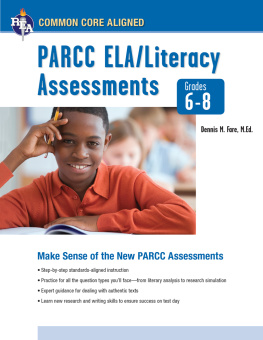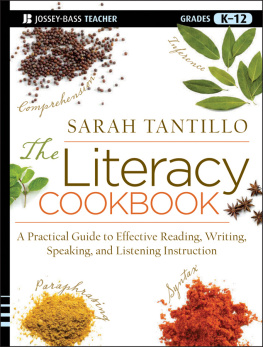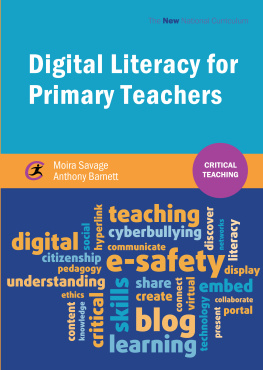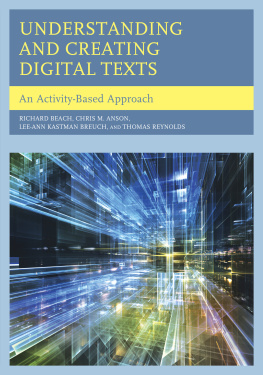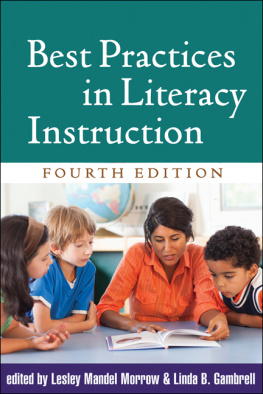Chapter One Digital Technology in the Literacy Classroom
This is a book about integrating digital technology into literacy instruction. There are several reasons we have chosen to write this book and why we are advocates for the integration of digital technology into K-6 literacy instruction. Our reasoning is explained throughout this chapter, so if you have any doubts about the role or value of digital technology as it relates to literacy, keep reading. In this chapter, we expand on the following ideas regarding why K-6 teachers should incorporate digital technology into their literacy instruction: (1) the use of digital technology is incorporated into the Common Core State Standards (CCSS); (2) digital technology can support literacy instruction by helping children share ideas, information and experiences through images, colors, and sounds; (3) digital technology changes the literacy practices we engage in daily and these practices should be reflected in school; (4) teachers have the opportunity and responsibility to model high quality uses of digital technologies for students and their families; (5) schools have the opportunity to ensure equitable access to digital technology and the way in which it is used in the classroom; and (6) teachers have the opportunity and responsibility to help children develop an understanding of the norms of appropriate, responsible, and ethical behaviors related to online rights, roles, identity, safety, security, and communication.
EXPLANATION OF TERMS AND IDEAS
Before we begin, we wish to clarify the terms that you will see throughout this book and the view of digital technology that we take. This clarification is important for understanding the ways that we believe teachers should integrate digital technology into literacy instruction.
Digital Literacies
Although the term new literacies is often used to describe the skills and strategies related to using digital technology for literacy and language arts instruction, there are many different meanings associated with the term new literacies. Most of those views, but not all, are consistent with the information presented in this book. Therefore, we instead use the term digital literacies to explain and describe the skills, strategies, and dispositions that students and teachers develop and use when learning literacy skills with digital technology. We use the definition of digital literacies provided in the 2013 International Reading Association (IRA) cross-journal virtual issue on digital literacies:
Digital literacies are practices related to critically navigating, evaluating and creating texts using a range of digital technologies. Oftentimes, digital literacies draw upon foundational forms of literacy. Digital literacies enable students to communicate effectively in digital media environments, as well as to comprehend the ever-changing digital landscape (IRA, n.d.).
The practices and skills described in this definition are what we wish to help teachers develop with their students through the ideas presented in this book.
Technology Integration
Another term that we wish to clarify is technology integration. To integrate means to make something a part of another larger thing. Thus, when digital technologies are integrated into literacy instruction, they become part of the teaching and learning process that leads to the attainment of literacy skills. It is important to recognize that when digital technology is integrated into literacy, the goal is still to help students become literate. The focus is not on the technology, but on the literacy goals. However, technology can be used to help students develop literacy skills for both print and digital environments.
It should also be noted that by integrating digital tools into classroom instruction, several instructional components will need to change. First, the classroom environment will likely be altered when digital technologies are integrated according to the Common Core State Standards. When using digital technology according to the Common Core Standards, students are collaborating, searching for information online, using digital tools to convey their understanding, and creating many types of digital products. This type of instruction likely represents a shift from the instruction that occurs in many classrooms without technology.
Another aspect of instruction that may need to be altered is the role of teachers. When students are using digital technology, the teacher may need to act more as a facilitator and enabler rather than always providing direct instruction. We have heard it stated that the teacher becomes the guide on the side rather than the sage on the stage. When thoughtfully approached, the teacher can use digital technology to better support diverse learning styles and learning preferences.
Students roles may also need to change. When integrating digital technology, there are increased opportunities for students to make choices about how they receive information and demonstrate learning. Students may not be used to making these choices and may need instruction in choosing methods and tools that support their learning styles and preferences. Additionally, students can take on the role of experts when using technology and can teach their peers about the function, features, and navigation of digital tools. This shift in roles will likely require a reshaping of classroom culture. However, it will be important that both teachers and students are persistent in trying to adjust to the new roles that technology brings.
DIGITAL TECHNOLOGY IN THE COMMON CORE STATE STANDARDS
Although many arguments have been made against the Common Core State Standards, all but five states in the United States have chosen to adopt the standards. One aspect of the standards that is likely a major change for K-6 teachers is the use of digital technology for literacy and language arts instruction. Although there is not a separate strand for technology, technology is integrated throughout the literacy and language arts standards, implying that being literate means being digitally literate (Dalton, 2012). Digital technology is explicitly mentioned in the anchor standards and in many of the individual grade level standards. Additionally, there are many grade level standards in which the use of digital technology is implicit or that require instruction that digital technology could be used to support. The Common Core State Standards Initiative website provides descriptions that offer a portrait of students who meet the CCSS. In regards to the use of digital technology, the site provides the following description:
They [students] use technology and digital media strategically and capably. Students employ technology thoughtfully to enhance their reading, writing, speaking, listening, and language use. They tailor their searches online to acquire useful information efficiently, and they integrate what they learn using technology with what they learn offline. They are familiar with the strengths and limitations of various technological tools and mediums and can select and use those best suited to their communication goals (Common Core State Standards Initiative, 2010, n.p.).
To help students work toward these goals, the use of digital technology is explicitly mentioned or implied in the following English Language Arts Anchor Standards:
- CCSS.ELA-Literacy.CCRA.R.7Integrate and evaluate content presented in diverse media and formats, including visually and quantitatively, as well as in words.
- CCSS.ELA-Literacy.CCRA.W.6Use technology, including the Internet, to produce and publish writing and to interact and collaborate with others
- CCSS.ELA-Literacy.CCRA.W.8Gather relevant information from multiple print and digital sources, assess the credibility and accuracy of each source, and integrate the information while avoiding plagiarism.



